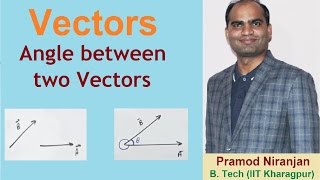Friday, 26 December, 2025г.
















Где искать: по сайтам Запорожской области, статьи, видео ролики
пример: покупка автомобиля в Запорожье
Engineering Physics 36 mcq.
https://www.shivameducation.org/2019/06/engineering-physics-36-mcq-or-questions.html
www.ShivamEducation.org
This Educational blog provides questions and answer and important mcq points for all competitive exams like UPSC, GPSC, GSSSB, SSC, CGL, JE, SE, NDA, PSC, GATE, Bank, RAILWAY, JEE, All India PSC Exam, and other Government exam body. Mainly Focus on Top expected mcq. join the revolution today.
Engineering Physics 36 MCQ or Questions and Answers.
1. Which one of the following is the property of an ionic compound?
High melting and boiling points.
Explanation: Ionic compounds are very strong in nature. They require a lot of energy to break them. Therfore ionic compound have high melting and boiling points.
2. When do ionic compounds conduct electricity?
a) In the gaseous state
b) In the solid state
c) When dissolved in water
d) They never conduct
Answer: c
Explanation: Ionic compounds can conduct electricity only if their ions are free to move. Hence they behave as conductors when they are dissolved in the water.
3. Which of the following covalent compounds conduct electricity?
a) Silica
b) Graphite
c) Diamond
d) Hydrogen chloride
Answer: b
Explanation: Graphite is made up of carbon layer that can slide over the each other. Like metals, the electrons are free to move. Whereas, the rest of the compounds are made up of carbon atoms held together tightly. Therefore, graphite is the covalent compound that conducts the electricity.
4. Which of the following is a crystalline solid?
a) Anisotropic substances
b) Isotropic substances
c) Supercooled liquids
d) Amorphous solids
Answer: a.
Explanation: Crystalline solids are those in which atoms are arranged in an orderly fashion. They have directional properties and therefore that is called anisotropic substances.
5. Which of the following has body centered cubic structure?
a) Polonium
b) Copper
c) Nickel
d) Tungsten
Answer: d
Explanation: In tungsten, atoms are arranged in the all eight corners and has an additional atom in the centre satisfying the body centered cubic lattice condition.
6. Fluids cannot resist sheer stress.
a) True
b) False
Answer: a
Explanation: Fluids can't resist sheer stress because they do not deform. Rather they flow. Fluids are opaque to transverse waves therefore they have the inability to undergo sheering stress.
7. What is the effect of annealing on the elasticity of materials?
a) Increases the elasticity
b) Decreases the elasticity
c) Has no effect on elasticity
d) Distorts the material
Answer: b
Explanation: Annealing is the process of heating a material and then gradually cooling it. While annealing, constituent crystals are uniformly oriented and form larger crystal grains, which results in decrease in their elastic properties.
8. Which of the following is the characteristic of the black body?
a) A perfect absorber but an imperfect radiator
b) A perfect radiator but an imperfect absorber
c) A perfect radiator and a perfect absorber
d) A perfect conductor
Answer: c
9. The energy distribution is not uniform for any given
temperature in a perfect black body.
a) True
b) False
Answer: a
10. Mechanical waves are called elastic waves.
a) True
b) False
Answer: a
Explanation: Waves which require a medium for their propagation are called the mechanical waves. They are also called elastic waves because they depend on the elastic properties of a medium.
11. Which of the following waves can be transmitted through solids, liquids and gases?
a) Transverse waves
b) Electromagnetic waves
c) Mechanical waves
d) Longitudinal waves
Answer: d
12. Sound travels through a gas under which of the following condition?
a) Isothermal condition
b) Non-isothermal condition
c) Adiabatic condition
d) Transverse condition
Answer: c
13. In which medium sound travels faster?
a) Solid
b) Liquid
c) Gas
d) Water vapour
Answer: a
Explanation: Sound travels in solid with the highest speed because the coefficient of elasticity of solids is much greater than the coefficient of elasticity of liquids and gases.
14. How are sound waves with a frequency of 20Hz to 20,000Hz termed?
a) Inaudible sounds
b) Infrasonics
c) Ultrasonics
d) Audible sound
Answer: d
Explanation: Sound waves below the frequency of 20Hz are called infrasonics.
Sound waves above 20,000Hz is ultrasonics.
Both are inaudible.
Sound waves between 20Hz to 20,000Hz are the audible sounds.
15. What will be the velocity of sound in a perfectly rigid rod?
a) Infinity
b) Finite
c) Zero
d) Constant
Answer: a
Explanation: Velocity of sound in a perfectly rigid body will be infinite because the value of Young’s modulus of elasticity is infinite for a perfectly rigid rod.
more mcq on above link.
Теги:
RELATED SEARCHES
fe engineering physics mcq pdf engineering physics 1st year mcq engineering physics mcq physics mcq mcq questions for first year engineering phy 109 lpu previous physics mcq elasticity
Похожие видео
Мой аккаунт


 У вашего броузера проблема в совместимости с HTML5
У вашего броузера проблема в совместимости с HTML5


